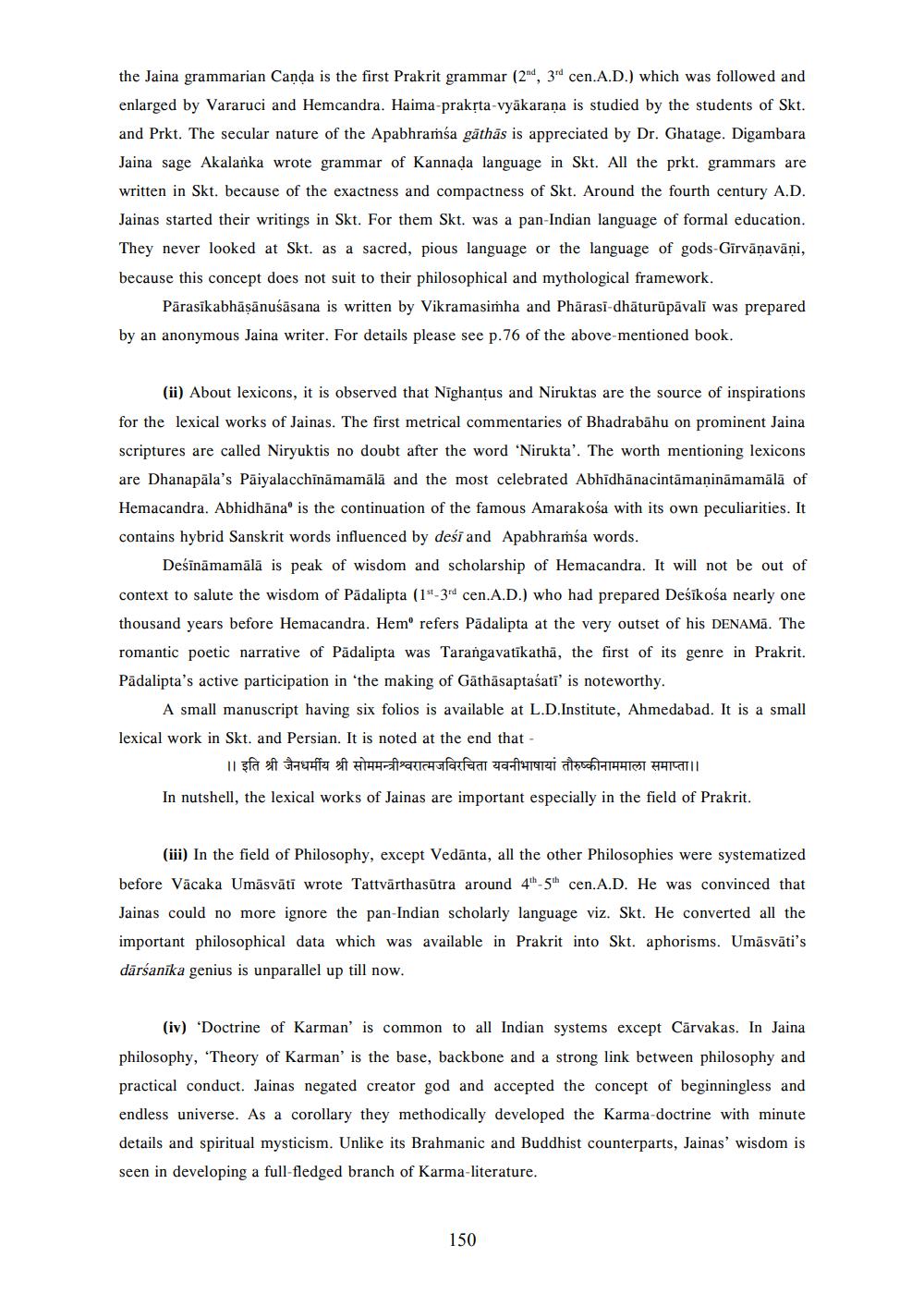________________
the Jaina grammarian Canda is the first Prakrit grammar (24, 3rd cen.A.D.) which was followed and enlarged by Vararuci and Hemcandra. Haima-praksta-vyākarana is studied by the students of Skt. and Prkt. The secular nature of the Apabhramśa gāthās is appreciated by Dr. Ghatage. Digambara Jaina sage Akalanka wrote grammar of Kannada language in Skt. All the prkt. grammars are written in Skt. because of the exactness and compactness of Skt. Around the fourth century A.D. Jainas started their writings in Skt. For them Skt. was a pan-Indian language of formal education. They never looked at Skt. as a sacred, pious language or the language of gods-Gīrvāņavāni, because this concept does not suit to their philosophical and mythological framework.
Pārasikabhāṣānuśāsana is written by Vikramasimha and Phārasi-dhāturūpāvali was prepared by an anonymous Jaina writer. For details please see p. 76 of the above-mentioned book.
(ii) About lexicons, it is observed that Nīghantus and Niruktas are the source of inspirations for the lexical works of Jainas. The first metrical commentaries of Bhadrabāhu on prominent Jaina scriptures are called Niryuktis no doubt after the word 'Nirukta'. The worth mentioning lexicons are Dhanapāla's Pāiyalacchināmamālā and the most celebrated Abhidhānacintāmaņināmamālā of Hemacandra. Abhidhāna is the continuation of the famous Amarakośa with its own peculiarities. It contains hybrid Sanskrit words influenced by desi and Apabhramsa words.
Deśīnāmamālā is peak of wisdom and scholarship of Hemacandra. It will not be out of context to salute the wisdom of Pādalipta (1"-3rd cen.A.D.) who had prepared Deśīkośa nearly one thousand years before Hemacandra. Hemo refers Padalipta at the very outset of his DENAMĀ. The romantic poetic narrative of Pädalipta was Tarangavatikatha, the first of its genre in Prakrit. Padalipta's active participation in the making of Gāthāsaptaśati' is noteworthy.
A small manuscript having six folios is available at L.D.Institute, Ahmedabad. It is a small lexical work in Skt. and Persian. It is noted at the end that
॥ इति श्री जैनधर्मीय श्री सोममन्त्रीश्वरात्मजविरचिता यवनीभाषायां तौरुष्कीनाममाला समाप्ता।। In nutshell, the lexical works of Jainas are important especially in the field of Prakrit.
(iii) In the field of Philosophy, except Vedānta, all the other Philosophies were systematized before Vācaka Umāsvāti wrote Tattvārthasūtra around 4h-5h cen.A.D. He was convinced that Jainas could no more ignore the pan-Indian scholarly language viz. Skt. He converted all the important philosophical data which was available in Prakrit into Skt. aphorisms. Umāsvāti's dārśanīka genius is unparallel up till now.
(iv) 'Doctrine of Karman' is common to all Indian systems except Cārvakas. In Jaina philosophy, 'Theory of Karman' is the base, backbone and a strong link between philosophy and practical conduct. Jainas negated creator god and accepted the concept of beginningless and endless universe. As a corollary they methodically developed the Karma-doctrine with minute details and spiritual mysticism. Unlike its Brahmanic and Buddhist counterparts, Jainas' wisdom is seen in developing a full-fledged branch of Karma-literature.
150




